Phoenix, AZ Pollen and Allergy Report for Summer 2023
Pollen Allergy Trends in Phoenix, AZ
When is pollen lowest in Phoenix, AZ?

February
Lowest month total PPM
Avg. PPM
When is pollen highest in Phoenix, AZ?

March
Highest month total PPM
Avg. PPM
How does pollen in Phoenix, AZ compare to Arizona?
Phoenix has a lower average PPM than the state of Arizona.
Phoenix yearly avg PPM:
Arizona yearly avg PPM:
How does pollen in Phoenix, AZ compare to the USA?
Phoenix has a lower average PPM than the USA.
Phoenix yearly avg PPM:
USA yearly avg PPM:
Is pollen worse this year in Phoenix, AZ?
Spring 2023 was better than spring 2022.
Spring 2023 PPM:
Spring 2022 PPM:
Average PPM in Phoenix, AZ
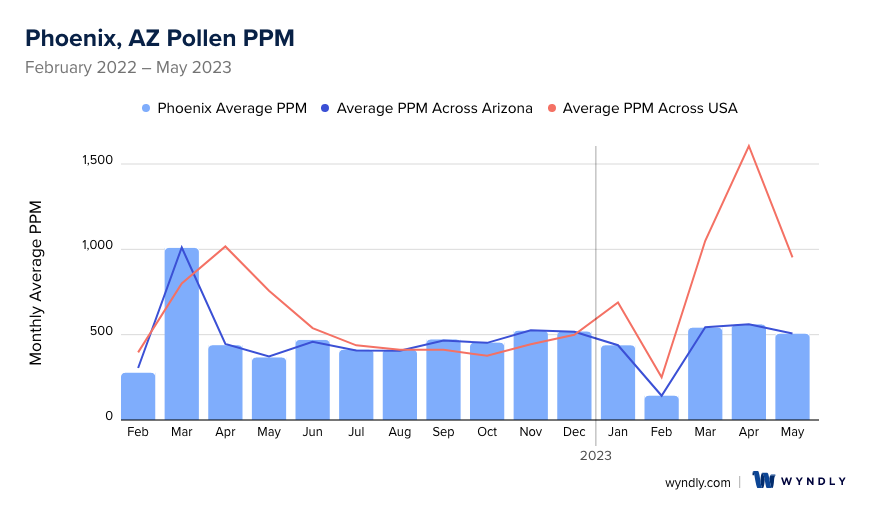

Phoenix, AZ Pollen and Allergy Breakdown by Month
Grass
When is grass pollen highest in Phoenix, AZ?
August has the highest grass pollen in Phoenix, AZ with an average PPM of
When is grass pollen lowest in Phoenix, AZ?
December has the lowest grass pollen in Phoenix, AZ with an average PPM of
Tree
When is tree pollen highest in Phoenix, AZ?
March has the highest tree pollen in Phoenix, AZ with an average PPM of
When is tree pollen lowest in Phoenix, AZ?
July has the lowest tree pollen in Phoenix, AZ with an average PPM of
Weed
When is weed pollen highest in Phoenix, AZ?
December has the highest weed pollen in Phoenix, AZ with an average PPM of
When is weed pollen lowest in Phoenix, AZ?
February has the lowest weed pollen in Phoenix, AZ with an average PPM of
Phoenix, AZ Pollen Monthly Breakdown by Pollen Type
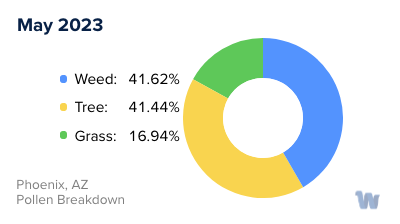

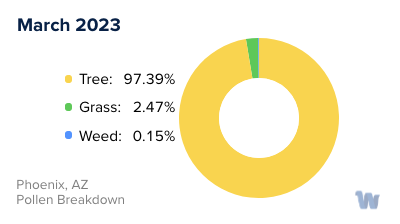
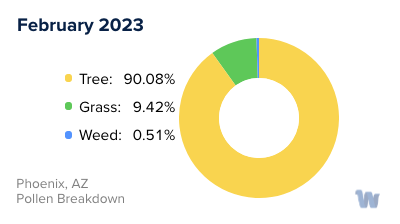


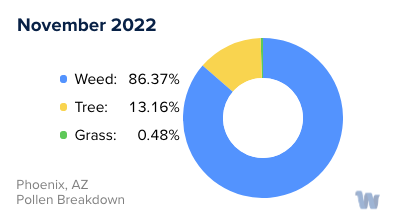
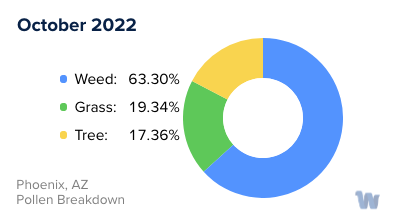
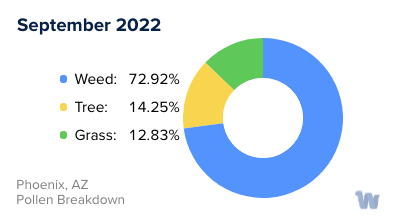


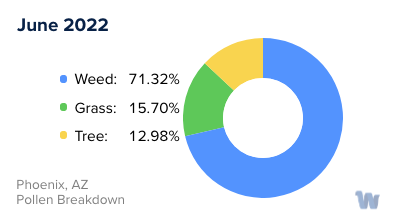
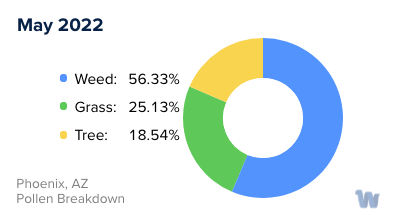

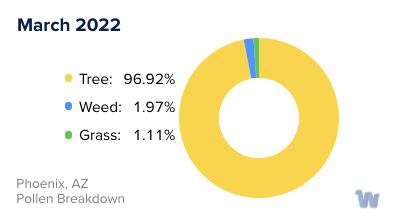
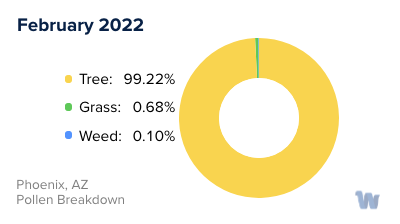
Pollen and Hay Fever in Phoenix, AZ
Pollen allergies, often referred to as hay fever, can be a seasonal nuisance for many residents of Phoenix, Arizona. These allergies are the body's response to airborne pollen from various types of plants, including trees, grasses, and weeds, which are abundant in this desert city.
In Phoenix, the pollen season generally spans three distinct periods, each characterized by different types of pollens.
The spring season, from late February to June, is predominantly tree pollen season. Here, the culprits are typically local species such as the Olive, Mesquite, and Palo Verde trees. These trees release small, light pollen grains into the air, which can easily be inhaled, triggering an allergic response in sensitive individuals.
Following the tree pollen season, grass pollen takes center stage from May to July. Bermuda grass, a common grass variety in Phoenix, is particularly known for its high pollen production. This grass is often used in lawns, parks, and golf courses, making it difficult for residents to avoid exposure during this time.
Finally, weed pollen peaks in the late summer to fall, typically from August to November. Ragweed, Sagebrush, and Russian Thistle are among the common weed species contributing to the pollen count during this time.
The desert climate of Phoenix contributes to a unique pollen landscape. The dry, windy conditions are perfect for carrying pollen across long distances. This means that even if specific plants are not in your immediate vicinity, their pollen can still find its way to you.
It's also worth noting that Phoenix's mild winters mean that some plants can pollinate year-round, leading to a perennial pollen season for certain species. This includes some types of grasses and weeds, which can continue to release pollen even in the cooler months.
In conclusion, pollen allergies in Phoenix, Arizona can be a year-round concern for many residents, with different plants contributing to the pollen count throughout the seasons. Understanding the sources of these pollens and their seasonal distribution can be the first step in managing your exposure and reducing your allergy symptoms.


